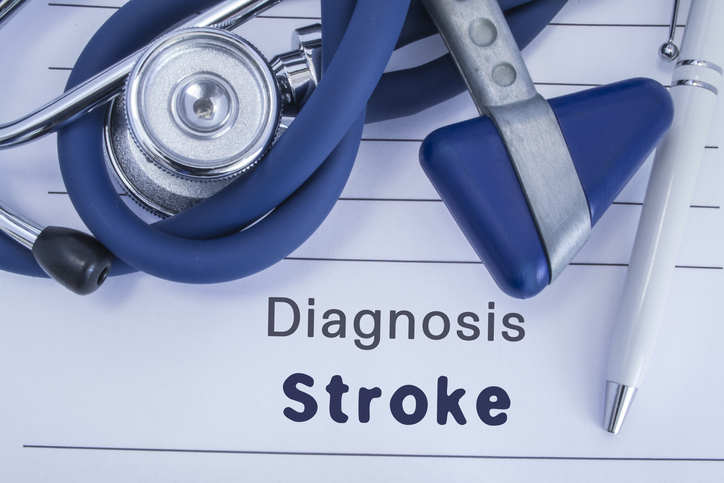Emotional and behavioral changes are a common effect of stroke.
If you or a loved one have experienced a stroke, there are likely to be long-term effects. These effects can vary in type and intensity, depending on which part of the brain was damaged. Some effects may appear straight away, others may show up months or years later. Immediate effects tend to be a weakness on one side of the body, slurred speech, lopsided face, blurred vision, etc. However, it is not uncommon for these symptoms to reduce in intensity or even go away as the brain rewires around the damaged portion.
Long-term changes after a stroke fall into six general categories: Physical, vision-related, balance related, communication, cognitive, and behavioral. The victim may experience any or all of these symptoms and, again, they may vary in severity.

Physical
Physical changes after a stroke can include:
- This is the classic weakness on one side of the body, which is experienced on the side opposite to the damage to the brain (the left side of the brain controls the right side of the body and vice versa). Hemiparesis is generally severe right after the stroke, but partial recovery is common, especially if proper treatment was initiated. However, long-term weakness on that side of the body is common, and some facial paralysis may remain.
- Difficulty holding and gripping objects, generally worse on the weaker side.
- This is sometimes a symptom of medication given after a stroke. Also, stroke survivors are more likely to experience insomnia, which can add to feelings of fatigue.
- Incontinence.
- Pain, which can include neuropathic pain that results from nerve damage.
- Difficulty swallowing (dysphagia).
Physical problems can sometimes be treated with medication, especially sleep difficulties, incontinence, and pain. Physical therapy can also help strengthen weakened muscles and teach the stroke survivor to compensate for hemiparesis and other weaknesses.
Vision
Blurry vision is common right after a stroke, but often resolves. However, some patients will experience long-term changes in vision, which may require treatment or management. The most common are:
- Double vision
- Hemianopsia, which is loss of part of the visual field, caused by damage to the optic nerve or the part of the brain which processes visual signals.
- Nystagmus (jerky and uncontrolled movement of the eyes).
- Loss of vision in the center of the visual field
- Loss of the ability to see color
In rare cases, blindness can happen after a stroke. An eye doctor may be able to offer some solutions to correct these visual problems or give advice on adapting to them.
Balance
Balance issues happen when the stroke damages the brainstem or the cerebellum. In fact, the majority of stroke survivors have lingering balance issues, which may manifest as being off balance or various symptoms of vertigo. Balance issues are generally addressed by physical therapy and balance exercises that improve balance and reduce dizziness.
Communication
There is a reason the image of the stroke patient tends to include communication issues: They're often very impactful and are easier to portray in media. Communication issues are common. In general, stroke survivors experience one of two forms of communication problems:
- This is a physical difficulty pronouncing words. Speech may be slurred or hard to understand. Survivors with dysarthria can understand speech perfectly and are using the correct words, but they may not be understood.
- Aphasia is trouble speaking or understanding words. Broca's aphasia is trouble speaking and Wernicke's aphasia is trouble understanding. Few patients experience both. A patient with aphasia may be unable to recall a word they need or may recall an incorrect word.
Cognitive
Cognitive problems after a stroke can be the most frightening symptoms. It's worth knowing that strokes will make the symptoms of early dementia or other cognitive problems worse. For example, if the patient already had issues from a TBI, they are much more likely to have more issues from a stroke. These issues may mean that the stroke survivor needs long-term assistance with daily living.
Behavioral
Some stroke survivors may demonstrate personality and behavioral changes and may appear not to be themselves. Stroke survivors may experience a loss of inhibition, empathy, or their sense of humor. Irrational jealousy and anger are sometimes experienced. Also, depression and anxiety are common as a result of other symptoms.
So, how do you cope with these symptoms? The best way is to take advantage of the resources available and support your needs. This may include physical and occupational therapy, talk therapy to deal with depression or anxiety, and medical support. Many issues, such as insomnia, can easily be treated with medication or simple lifestyle changes. Talking to your doctor is vital, especially if symptoms are side effects of medication.
Many of these symptoms, while they may be long-lasting, can be reduced or mitigated. However, a stroke always changes the person who experiences it. Church Home LifeSprings can help you or your loved one on the road to recovery. To find out more about the services we offer to stroke survivors, contact us today.

